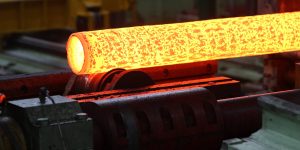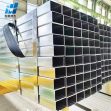Design and application of lightweight steel
In the pursuit of efficiency and sustainability, lightweight steel design has emerged as a pivotal innovation across various sectors of engineering and construction. This transformative approach of black steel pipe, centered on reducing material density without compromising structural integrity, is reshaping how we build and design everything from automobiles to towering skyscrapers.
The allure of lightweight steel lies in its ability to strike a delicate balance between strength and weight reduction. Advanced manufacturing processes and careful alloy compositions enable the creation of steel grades that are thinner yet retain or even surpass the load-bearing capabilities of their heavier counterparts. This reduction in mass translates directly into enhanced fuel efficiency in vehicles, lower transportation costs for building components, and a diminished environmental footprint through reduced energy consumption during both production of cold rolled steel pipe and use.
One of the key drivers behind this revolution is the integration of high-strength, low-alloy (HSLA) steels. These materials, optimized through precise control of chemical composition and microstructure, offer superior mechanical properties, allowing for thinner sections without sacrificing performance. In automotive industries, for instance, the adoption of HSLA steels has led to lighter vehicles without compromising safety standards, contributing to a cleaner, more sustainable mode of transportation.
Similarly, in architectural applications of Cold Rolled Round Steel Pipe, lightweight steel structures are enabling architects to push the boundaries of design, creating soaring, open-plan spaces that were once unimaginable. These structures leverage the strength of lightweight steel to span greater distances with less material, fostering a new aesthetic of minimalism and elegance while reducing the overall weight burden on foundations and the need for extensive reinforcement.

Moreover, the benefits extend beyond mere aesthetics and efficiency. In disaster-prone regions, lightweight steel construction offers enhanced seismic resistance, allowing structures to flex under stress without collapsing, thereby improving public safety. Its modular nature also facilitates rapid construction and easy dismantling or reuse, aligning with circular economy principles.
Despite its many advantages, the journey towards wider adoption of lightweight steel designs requires overcoming technical and economic hurdles. Innovations in design software, manufacturing technologies, and construction methods are essential to fully harness its potential. Furthermore, fostering collaboration among material scientists, designers, and structural steel pipe manufacturer is vital to ensure that designs fully capitalize on the unique properties of these advanced steels.
In conclusion, the design and application of lightweight steels embody a paradigm shift in modern engineering and architecture, where less is indeed more. As we continue to navigate the challenges of the 21st century, this material innovation stands as a beacon of hope, promising a future where structures are not only stronger and more durable but also more sustainable and adaptable to the ever-evolving needs of our societies.
Tel: +86 18202256900 Email: steel@fwssteel.com










